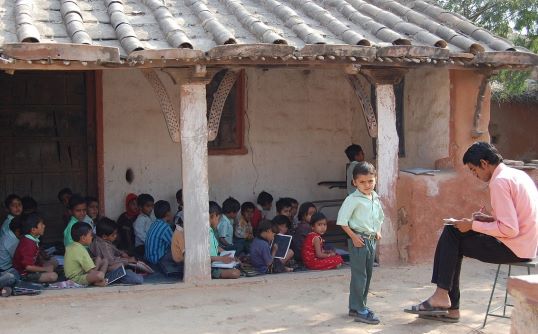
Shrinidhi RS, Co-Founder and CEO, CherriLearn
 The educational divide in India is stark. From well-resourced urban schools to low resourced schools in remote tribal areas is a full range of gaps. Lack of infrastructure, qualified teachers, and quality learning materials hinders student achievements in the schools in tribal areas. According to the 2021 National Achievement Survey (NAS) Class 3 students in tribal districts scored an average of 43.8% in language and 38.7% in mathematics, compared to the national average of 52.1% and 48.7% respectively. This highlights the need for targeted interventions to improve learning outcomes in these areas.
The educational divide in India is stark. From well-resourced urban schools to low resourced schools in remote tribal areas is a full range of gaps. Lack of infrastructure, qualified teachers, and quality learning materials hinders student achievements in the schools in tribal areas. According to the 2021 National Achievement Survey (NAS) Class 3 students in tribal districts scored an average of 43.8% in language and 38.7% in mathematics, compared to the national average of 52.1% and 48.7% respectively. This highlights the need for targeted interventions to improve learning outcomes in these areas.
EdTech offers a powerful toolkit to bridge the educational gap in India’s tribal areas. By overcoming the challenges and implementing solutions that prioritize accessibility, local languages, and offline capabilities, EdTech can empower tribal students and unlock their full potential. As educators, policymakers, and EdTech developers work together, technology can become a bridge to a brighter educational future for these often-marginalized communities.
- Overcoming Infrastructure Limitations: EdTech tools can provide access to a vast library of educational content, including interactive modules, simulations, and animated videos. This can supplement classroom learning or even serve as a primary source of education in areas with limited schools. A 2023 study by the World Bank (Source: https://www.worldbank.org/en/topic/edutech) found that EdTech interventions in developing countries can improve learning outcomes by up to 20%, particularly when used in conjunction with traditional classroom instruction.
- Language Accessibility: EdTech platforms can be developed in local tribal languages, allowing students to learn in their familiar tongue. This fosters better comprehension and removes a barrier to grasping complex concepts. A 2022 report by UNESCO (Source: https://www.unesco.org/en/languages-education) emphasizes the importance of mother-tongue instruction in early childhood education, promoting cognitive development and a stronger foundation for future learning.
- Personalized Learning: EdTech platforms can offer personalized learning experiences. Students can progress at their own pace, revisiting challenging topics or diving deeper into areas of interest. This caters to individual learning styles and needs, as highlighted in a 2021 research paper published in the journal “Educational Technology Research and Development” (Source: https://slejournal.springeropen.com/articles/10.1186/s40561-020-00140-9 )
- Engaging Content: EdTech can make learning interactive and engaging. Gamification elements, quizzes, and educational apps can make the process more enjoyable and stimulate a love for learning. A 2022 study by the Central Square Foundation (Source: https://www.centralsquarefoundation.org/) found that gamified learning approaches can increase student engagement by up to 60%, leading to improved academic performance.
- Teacher Training and Support: EdTech platforms can provide training modules and support for teachers in remote areas. This can help them stay updated on the latest teaching methods and effectively utilize technology in the classroom. The Government of India’s “Param Shiksha” initiative (Source: https://pledge.mygov.in/shiksha-sankalp/) launched in 2021, aims to leverage technology for teacher training and professional development, which can significantly benefit educators in tribal areas.
- Focus on STEM Education: Upskilling for the Future
A crucial aspect of empowering tribal students is equipping them with the skills needed to thrive in the 21st century. EdTech can play a vital role in promoting Science, Technology, Engineering, and Mathematics (STEM) education in these areas. Interactive simulations, project-based learning experiences, and online coding platforms can spark an interest in STEM subjects and prepare students for future careers in these high-demand fields. Studies by the American Institutes for Research (AIR) have shown that effective STEM education programs can improve critical thinking, problem-solving skills, and career readiness, leading to upward social mobility.








